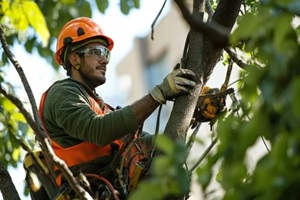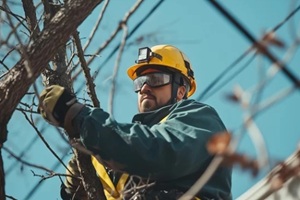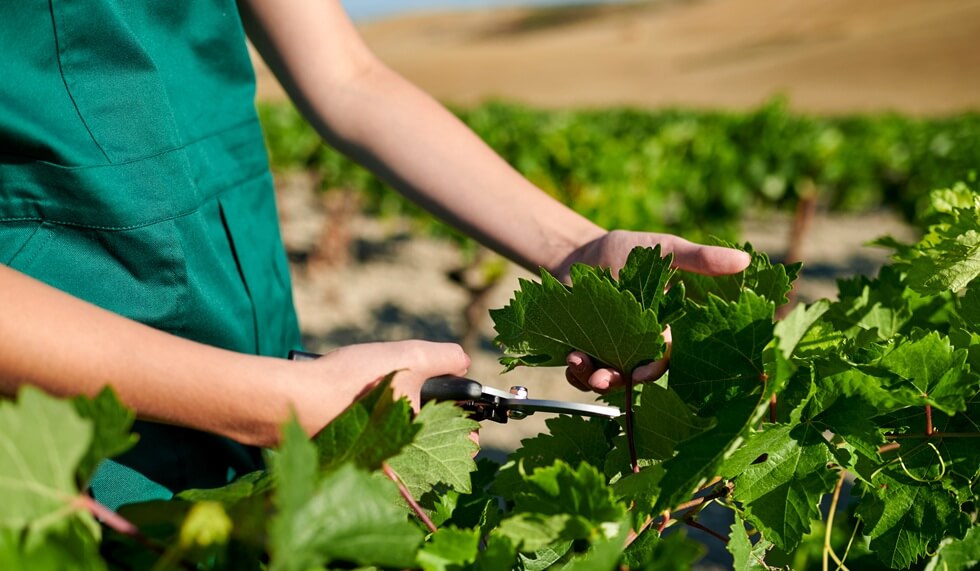
One of the most impactful practices homeowners can implement to maintain healthy, structurally sound landscapes is through proper pruning. When performed correctly, this essential tree care technique does far more than simply maintain appearances. It actively promotes stronger growth patterns, improves tree health, and builds long-term structural integrity that protects your property investment.
This article explains proper pruning techniques, common mistakes to avoid, and how partnering with professional tree care specialists can beautify and protect your property.
The Science Behind Pruning and Tree Growth
Contrary to what many property owners believe, pruning doesn’t slow tree growth. Pruning actually stimulates growth by removing terminal buds that exert chemical control over lateral buds located lower on the stem. When arborists remove these dominant growth points, dormant lateral buds become activated, leading to new branch development and a more balanced canopy distribution.
This process works because trees naturally redirect energy from removed branches to remaining healthy growth points. With expert precision and the correct tools, professional tree care specialists leverage this biological response to encourage desired growth patterns while maintaining the tree’s natural form.
Building Strong Structural Foundation Through Pruning
Early Structural Training
The foundation of a well-structured tree begins in its youth an dif done correctly, will result in a tree that is structurally stronger and lives a longer life. Young tree training focuses on establishing a single dominant leader and well-spaced scaffold branches that will support the tree’s mature canopy.
Professional arborists evaluate branch angles, spacing, and competing leaders during these formative years. This strategic approach prevents structural weaknesses that could become costly problems decades later.
Mature Tree Structure Enhancement
For established trees, structural pruning takes a different approach. Structural pruning focuses on encouraging one strong central leader while minimizing competing stems using careful reduction cuts. This technique maintains the tree’s natural architecture while addressing potential failure points.
Certified arborists focus on removing branches with poor attachment angles, reducing the weight of extended limbs, eliminating crossing or rubbing branches, and creating proper spacing between major scaffold branches. This comprehensive approach addresses structural weaknesses while preserving the tree’s natural beauty and growth patterns.
Health Benefits That Support Long-Term Growth
Disease and Pest Prevention

Strategic pruning serves as a proactive health measure. Proper pruning removes dead or dying branches that have been injured by disease, severe insect infestations, animals, storms, or other damage. By eliminating these compromised areas, arborists prevent the spread of pathogens and reduce the habitat of pests.
Improved air circulation through thoughtful branch removal also creates an environment less favorable to fungal diseases, which often thrive in humid, stagnant conditions within dense canopies.
Optimizing Resource Distribution
Trees with proper pruning allocate resources more efficiently. When damaged, diseased, or poorly positioned branches are removed, the tree redirects water, nutrients, and energy to healthy, well-positioned growth.
This improved resource distribution results in stronger wood density, better drought tolerance, enhanced natural defense mechanisms, and more productive photosynthesis. The cumulative effect of this enhanced resource allocation creates trees that are better equipped to withstand environmental stresses while maintaining vigorous growth patterns.
Certified arborists understand the importance of timing, technique, cleanliness of tools, and the overall strategy for the tree. This encompassing standard is designed for the health and well-being of not only the individual tree, but the surrounding landscape.
Common Pruning Mistakes That Hinder Growth
Topping and Over-Pruning
Cutting off treetops or removing large limbs often leaves stubs that damage the tree’s natural form, encourage weak branch growth, and increase the risk of health issues. This damaging practice compels trees to generate numerous weak shoots that are susceptible to breaking.
Improper Timing and Technique
Amateur pruning often results in poorly placed cuts, excessive removal, or inappropriate timing that stresses trees and reduces their natural defenses. Certified arborists understand the requirements of each tree species and apply techniques that work with a tree’s natural biology instead of against it.
The ISA Certification Difference
Professional arborists certified by the International Society of Arboriculture (ISA) follow established standards that prioritize both immediate results and long-term tree health. These specialists understand the complex relationship between pruning techniques and tree biology, guaranteeing that each cut supports the tree’s natural growth patterns.
Trust RTEC Treecare for Professional Tree Pruning in Virginia
Your trees represent a significant investment in your property’s future, and they deserve care from professionals who understand both the science of arboriculture and the art of preserving natural beauty. RTEC Treecare’s certified arborists bring decades of experience and environmental consciousness to every pruning project.

As ISA-certified professionals and TCIA-accredited specialists, we approach each tree with a preservation-focused mindset, certifying that our pruning techniques promote healthy growth while maintaining structural integrity. Our expertise and commitment mean you can trust us to make recommendations that benefit both your immediate needs and your landscape’s long-term health.
When dealing with storm-damaged branches and structural concerns, or when you want to optimize the health and appearance of your trees, RTEC Treecare provides the expertise property owners in Virginia have trusted since 1996.
Contact us online or call (571) 506-6140 to schedule a consultation and learn how professional tree pruning can enhance your landscape’s growth, structure, and value for years to come.


